Add a dynamic geometry into the world and then run the simulator.
Here we will cover the following topics:
An entity is referred to as a dynamic entity if it is part of a rigid body. Otherwise, it is considered a static entity. Dynamic entities are subject to the laws of physics and force. Static geometries do not react to force, but do have an effect on collisions (and collision detection). A dynamic entity is therefore subject to force of contact with static entities
Now you will add a sphere to the project and make it dynamic (the box will remain a static entity).
|
Step |
Description |
|
Preparation
|
|
|
Changing the sphere (see Changing a geometry)
|
Results: 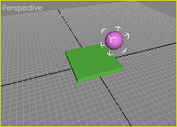 |
|
|
|
|
Step |
Description |
|
Add a rigid body:
|
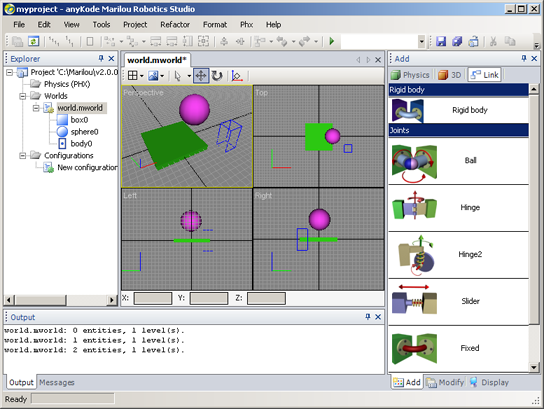 |
|
Attach the sphere to the rigid body:
|
A line between the two entities shows the connection you just made: 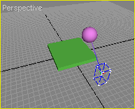 This screen shot shows:
|
|
|
|
|
|
|
Choose the configuration Make sure that a default configuration is selected.  |
|
Click on the green arrow to run simulation.  |
|
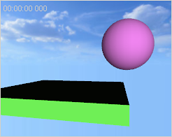 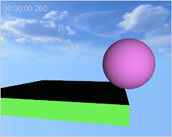 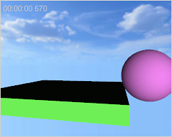 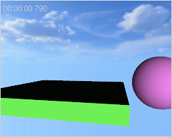 |
|
Documentation v4.7 (18/01/2015), Copyright (c) 2015 anyKode. All rights reserved.
|
|
What do you think about this topic? Send feedback!
|